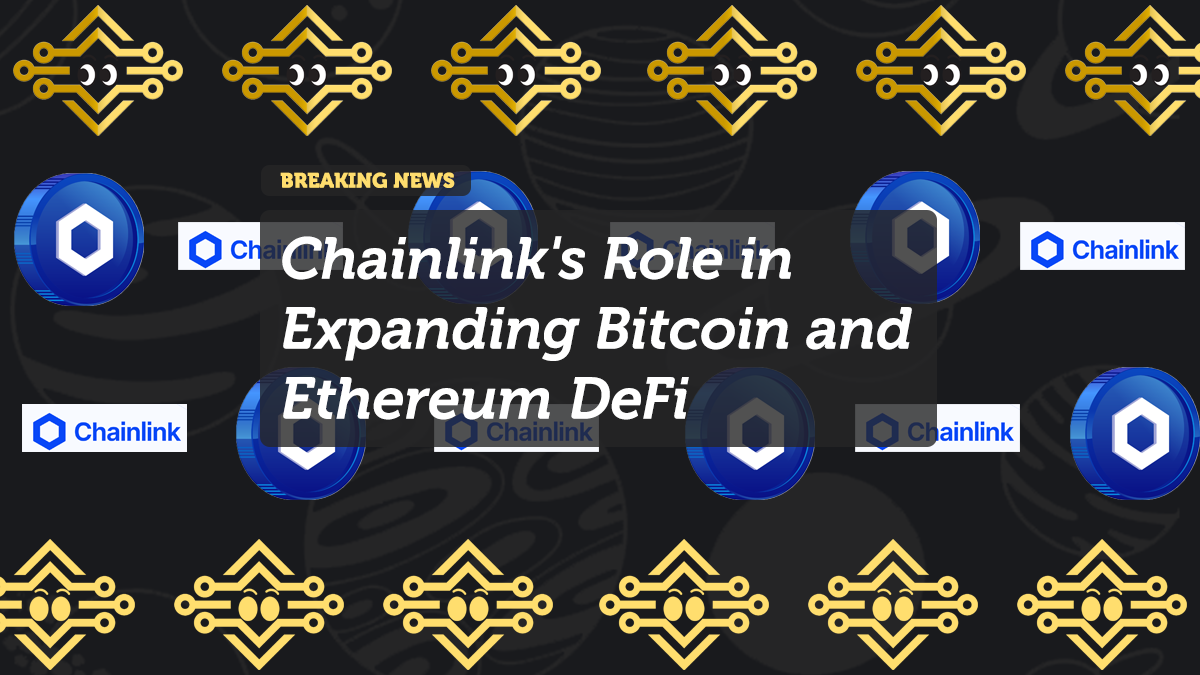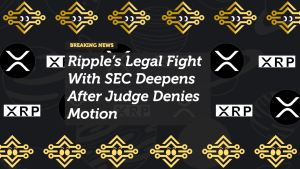
Chainlink’s Role in Expanding Bitcoin and Ethereum DeFi
Chainlink is the backbone of decentralized finance (DeFi), acting as the vital bridge between blockchain networks and external data. Its innovations have unlocked new possibilities for DeFi, particularly for Bitcoin and Ethereum ecosystems. Let’s explore how Chainlink is driving adoption, ensuring security, and enabling new use cases for these leading cryptocurrencies.
Facilitating DeFi Growth for Bitcoin and Ethereum
Ethereum DeFi: Powering Smart Contracts with Data
Ethereum’s DeFi ecosystem thrives on accurate, real-time data for price feeds, collateral management, and interest rates. Chainlink ensures these data requirements are met securely and reliably:
- Price Feeds: Chainlink delivers high-precision, tamper-proof price feeds to DeFi platforms like Aave and Compound, allowing for efficient lending, borrowing, and staking mechanisms.
- Risk Reduction: By using decentralized oracle networks, Chainlink mitigates the risks of single points of failure and data manipulation. This builds trust for users and institutions alike.
Bitcoin DeFi (BTCFi): Beyond Store of Value
Bitcoin has traditionally been limited to its role as “digital gold,” but Chainlink is expanding its functionality through integrations with Bitcoin layer-2 networks like Spiderchain.
- DeFi Enablement: Chainlink provides price feeds and other data to enable Bitcoin’s participation in DeFi protocols without relying on centralized wrapped assets like WBTC.
- Proof of Reserve: This feature ensures the security and transparency of Bitcoin-backed assets used in DeFi, verifying the collateralization of tokens like WBTC.
Recent Partnerships and Ecosystem Expansions
1. Ripple and Chainlink
Ripple’s integration with Chainlink enhances the utility of RLUSD, Ripple’s stablecoin, in Ethereum and XRP Ledger-based DeFi. Chainlink’s price feeds ensure stability and transparency, promoting RLUSD adoption in lending and liquidity protocols.
2. Aave and Chainlink
Aave’s integration with Chainlink across multiple blockchains, including its potential expansion to Bitcoin through Spiderchain, demonstrates the importance of oracles in cross-chain DeFi. This partnership supports a more interconnected financial ecosystem.
3. SWIFT and Chainlink
SWIFT’s collaboration with Chainlink to tokenize assets is a groundbreaking step toward bridging traditional finance with DeFi. By enabling secure cross-chain transfers, Chainlink is making institutional adoption of DeFi more feasible.
Impact on the Cryptocurrency Market
Increased Utility and Adoption
By integrating Bitcoin into DeFi through Chainlink, BTC holders gain access to yield farming, lending, and other financial services, increasing Bitcoin’s demand and adoption.
Market Stability
Chainlink’s reliable data feeds reduce risks like flash loan attacks and data manipulation, encouraging more institutional participation in DeFi.
Fostering Innovation
Chainlink’s advancements drive competition and innovation across DeFi, resulting in better services, improved security, and enhanced user experiences.
Benefits and Risks of Chainlink’s Role in DeFi
Benefits:
- Cross-Chain Functionality: Enables seamless interaction between blockchain networks, expanding DeFi’s reach.
- Enhanced Security: Decentralized oracles eliminate single points of failure, ensuring data integrity.
- Broader Use Cases: Bitcoin’s integration into DeFi enhances its utility and provides more opportunities for its holders.
Risks:
- Smart Contract Vulnerabilities: Any bug in Chainlink’s integration with DeFi platforms could lead to financial losses.
- Regulatory Uncertainty: Increased adoption of Bitcoin in DeFi may attract regulatory scrutiny.
- Network Congestion: Greater adoption could lead to performance bottlenecks, affecting data delivery speeds.
Community Discussion: Why Oracles Are Essential for DeFi
How do you see oracles like Chainlink shaping the future of DeFi? What challenges do you foresee, and how can the crypto community address them?
Share your thoughts:
- How do Chainlink’s integrations with Ethereum and Bitcoin impact the DeFi landscape?
- What additional features or improvements would you like to see in Chainlink’s offerings?
Understanding Chainlink’s Technology: A Quick Guide
- Oracle Networks: Chainlink operates through decentralized networks of oracles, which fetch and validate data before delivering it to smart contracts.
- Cross-Chain Protocols: The Cross-Chain Interoperability Protocol (CCIP) enables secure interactions between different blockchains, paving the way for multi-chain DeFi.
- Data Security: Chainlink uses cryptographic proofs, reputation systems, and decentralized node operators to ensure data accuracy and reliability.
- Aggregated Data Feeds: By collecting data from multiple sources, Chainlink mitigates manipulation risks and provides accurate, aggregated information.
Resources for Learning About Chainlink
- Chainlink Official Blog: Access the latest updates and deep dives into Chainlink’s ecosystem (Visit Here).
- Chainlink Documentation: Comprehensive technical guides for developers looking to integrate Chainlink services (Visit Here).
- Crypto Education Platforms: Websites like CoinDesk, Binance Academy, and Cointelegraph provide detailed resources on Chainlink and its role in DeFi.
- YouTube Tutorials: Channels like Ivan on Tech and Coin Bureau regularly post Chainlink-related content.
Final Thoughts
Chainlink’s role in expanding Bitcoin and Ethereum DeFi is nothing short of revolutionary. By bridging blockchains with real-world data, Chainlink enhances security, fosters innovation, and opens new opportunities for users across the crypto space.
From facilitating Bitcoin’s participation in DeFi to enabling cross-chain asset transfers, Chainlink continues to push the boundaries of what’s possible in decentralized finance.
To stay updated on Chainlink, Bitcoin, Ethereum, and all things DeFi, follow CryptoLiveLeak—your trusted source for cutting-edge crypto insights.
















